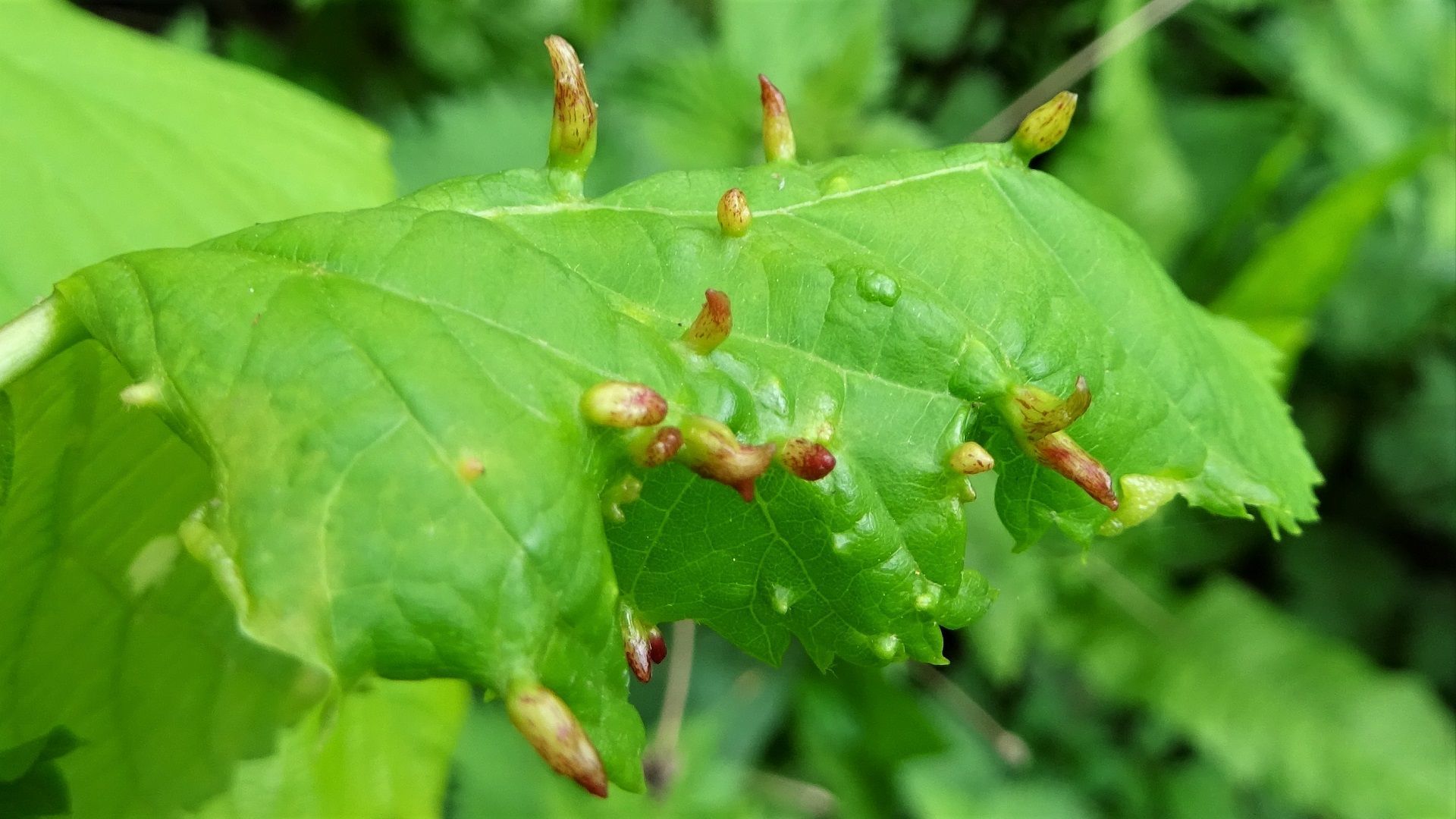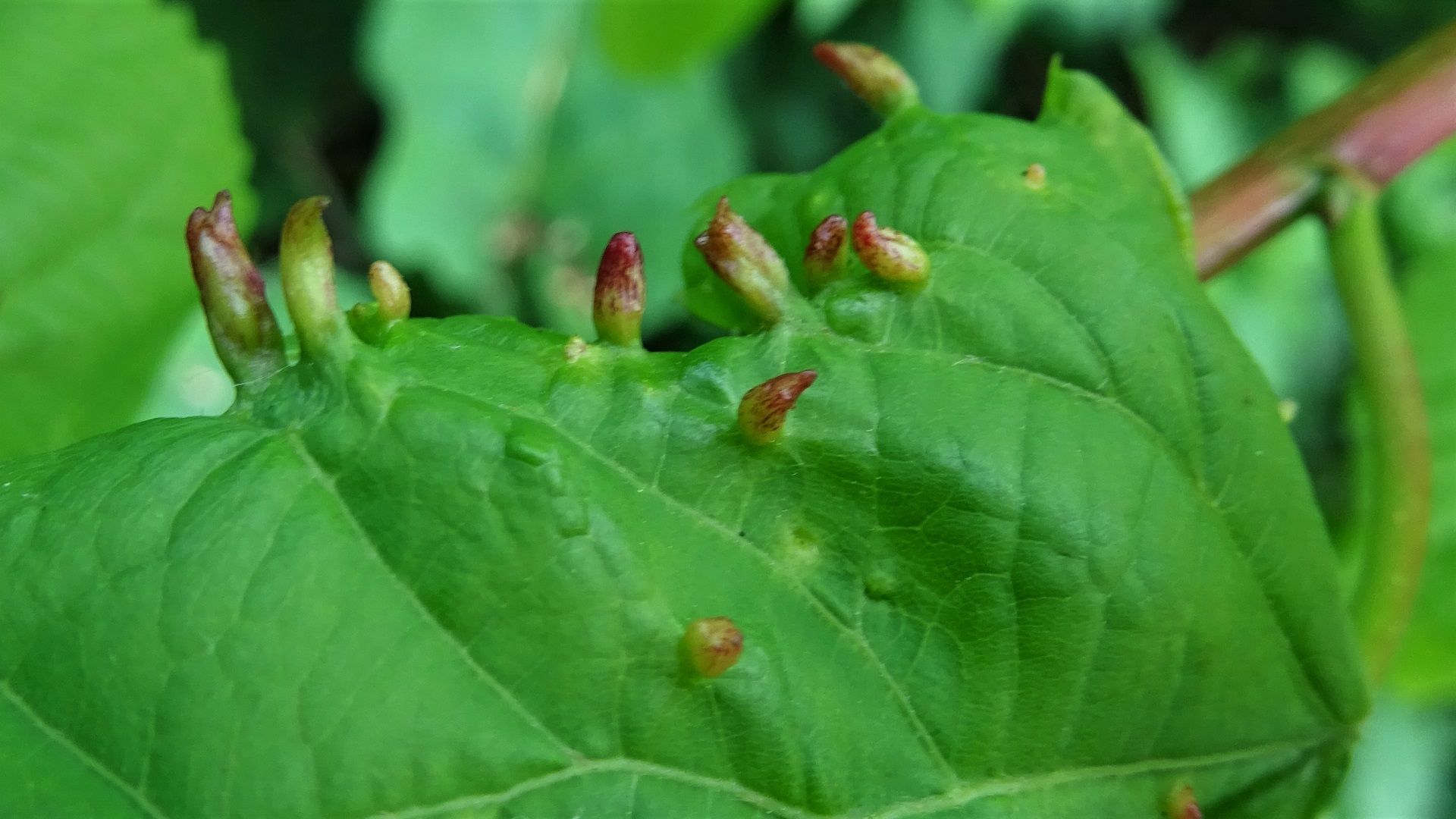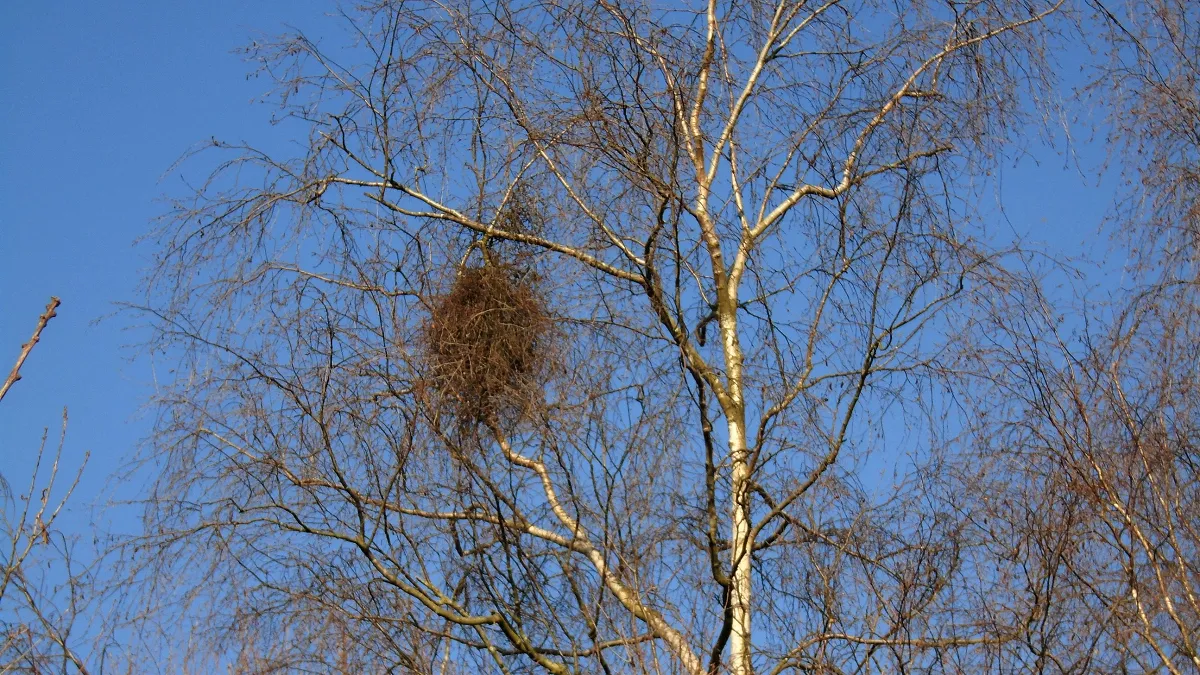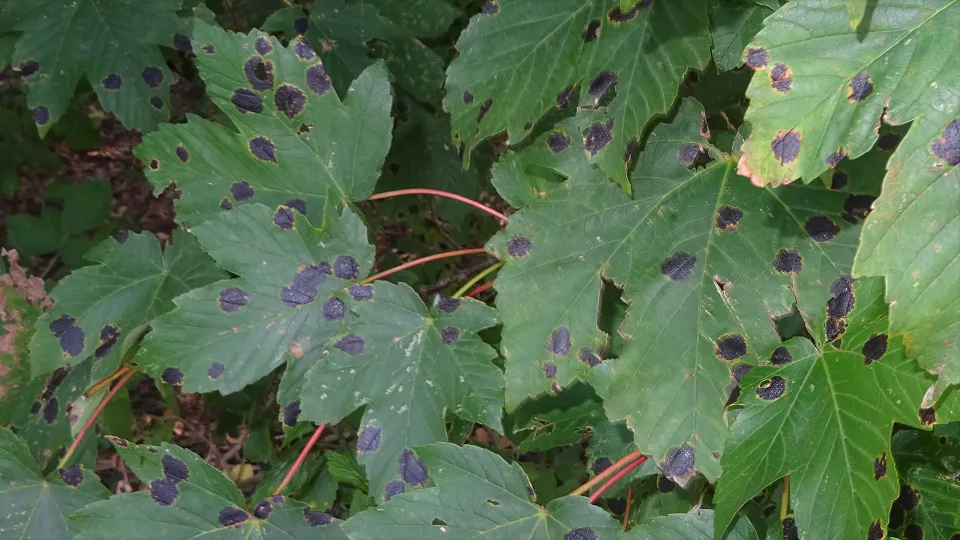GALLS
MORE TREE GALLS
Brown hard growths on
Ash tree keys are galls caused by the mite
Aceria fraxinivorus.
Beech Leaf Galls are cylindrical growths that grow on
Beech leaves are caused by midge
Hartigiola annulipes. They begin as flattened hemispheres on both leaf surfaces. They gradually grow up to 5mm long, sticking up like hairy columns and becoming reddish-brown. A single white larva inhabits each gall. Once the larvae is mature the gall falls from the leaf leaving a circular hole behind. Pupation follows and adults emerge the following spring. They go on to lay eggs in fresh leaves to produce the next generation.
Nail Galls
appear on the upper surface of
Lime tree leaves during spring. The galls are caused by mites Eriophyes tiliae. Several sub-species exist, partly identified by their positioning on the leaves in relation to the leaf veins and other structures.
Birch Besom, aka
Witch's Broom, is caused by fungus
Taphrina betulina deforming
Silver Birch.
A dense mass of shoots grow from a single point with the resulting structure resembling a witch's broom or bird's nest. This gall occurs throughout the year but becomes more obvious during the winter when there are no leaves on the trees.
Sycamore Tarspot is caused by fungus
Rhytisma acerinum on
Sycamore and Maple leaves.
Black spots with golden edges form on leaves during autumn. The fungus overwinters on fallen leaves and produces spores in spring. The spores are sticky allowing them to glue themselves onto fresh leaves.
© hainaultforest.net. All rights reserved.







